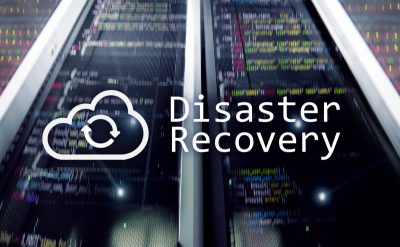Witnessing the rapid adoption of technology follows through the hyperbole and misconceptions about it. Cloud computing is a vast source of technology. It is amongst those technologies where everyone has a different point of view and thus brings into it a lot of confusion when it comes to the facts and myths.
When CIOs and other IT leaders intend to use the cloud in 2020, getting a clear understanding of what the myth is and what the fact is can help to shape reasonable expectations about cloud computing. Unraveling these misconceptions would be crucial for companies to make the most of the many benefits cloud can bring.
Check on myths and amp; facts of cloud computing
1. Myth – Clouds are more prone to insecurity
Fact – Data breaches may indeed take place, but by initiating the necessary steps, it can be managed and kept under control.
The major Microsoft, Google, AWS, and other significant cloud handlers are keen to keep track of security by performing regular external audits, thus ensuring effective compliance and certification of their infrastructure.
By implementing various security best practices and making use of different technologies, such as firewalls and intrusion prevention to data loss prevention as well as rootkit detection based on machine learning, can help in controlling data breaches. Adding to it, the organization should design a clear set of policies and set application configuration to keep track of data breaches.
2. Myth – Clouds can replace jobs
Fact – Clouds are creating more opportunities.
Many are of the view that, soon, cloud automation may acquire manual jobs, thus causing disruption to employment in some regions of the industry. Instead, it is creating more opportunities, or explaining in simple terms; it is transforming them.
IT professionals can instead strengthen their roles by developing internal processes, applications, and strategies to help organizations or businesses grow better.
3. Myth – Clouds are non-affordable
Fact – Cost of the cloud depends on several factors.
Depending on several factors, such as the amount of data stored, the number of applications used, the number of users present, and the backup needed, the cost of the cloud is determined. Cloud scales itself according to the needs, meaning paying only for that part of the cloud that is being used.
It’s in the long run that cloud computing solutions become cost-effective. Investing in the required infrastructure can be reduced as well as the cost of maintaining and updating these resources can also be eliminated depending upon the cloud model and provider chosen.
4. Myth – Clouds are still under development
Fact – Contrary to the belief, cloud computing is nothing new.
Cloud computing has, of course, evolved through several phases, and each year it continues to improve.
Considering previously stated staggering market valuations, many still view the cloud as a revolutionary technology—something for the future that is still in its infancy and requires refinement. It’s almost like the cloud was a victim of its success, and such rapid growth and speculation has led many to believe it’s going to be short-lived and quickly replaced by ‘the next best solution.’
In reality, the cloud has been optimized for years. Any future improvements and developments act as an enhancement on an already integrated infrastructure. Looking at AWS as the break in the consumer market for cloud computing, it’s a technology that is quickly approaching 20 years of industry authority.
5. Myth – Clouds can take over the control
Fact – The only factor that changes is how the data is stored and how it gets processed.
The loss of control is experienced only when a cloud solution task is passed onto a cloud hosting provider to perform the actions. A cloud partner can take charge of – expanding resources to lead business growth, monitoring applications, maintaining and updating infrastructure as well as ensuring high levels of security while managing these tasks.
This eventually leads to spacing up more time for IT engineers to focus on business projects and the development areas of the organization, thus ensuring 100% control of the data. This explains that the path can change but not the responsibility of processing and storing of data.
Conclusion
Migrating to the cloud is a journey. Nowadays, cloud transformation is considered more than a plug-and-play project or a traditional system implementation. It takes strategic thinking and the ability to match technology for today and the future with the business needs and processes.
Different businesses have different needs, all of which cannot be fulfilled by the cloud. Consultants providing cloud services, hybrid, or on-premises software are sure to point out their offer’s benefit while talking about their competitor’s negatives. Given the uncertainty and confusion that comes with such a business-critical service, the cloud is particularly suitable for this approach.
There will still be laggards who don’t believe their data can be protected or who think the cloud will make their skills obsolete. Determining what type of cloud services will make business services better, along with which company could best serve the requirements, is also one of the important tasks. To enhance any business, choosing the right cloud storage is an essential decision.
The cloud strategy acts as the foundation while implementing any plan that needs to be comprehensive and explicitly stated.
For more insights and case studies on cloud solutions, download our latest whitepapers on cloud solutions.













![[Things to Know] Before Selecting Cloud Solutions](https://d2qt3hjxf3fk7j.cloudfront.net/wp-content/uploads/2020/02/13083906/Cloud-Solution-400x247.jpg)